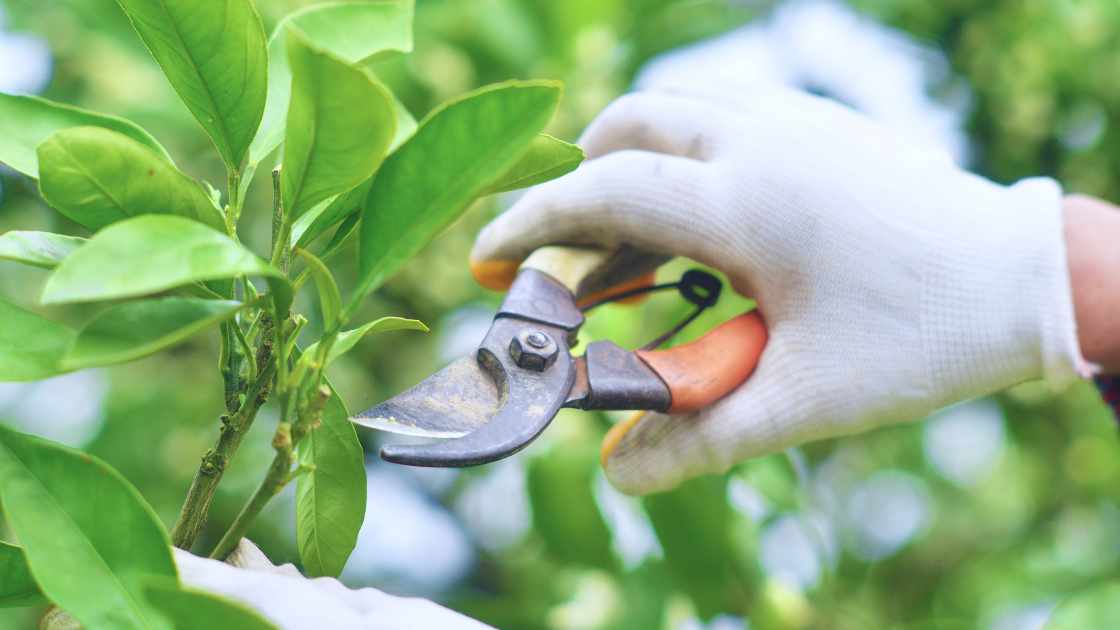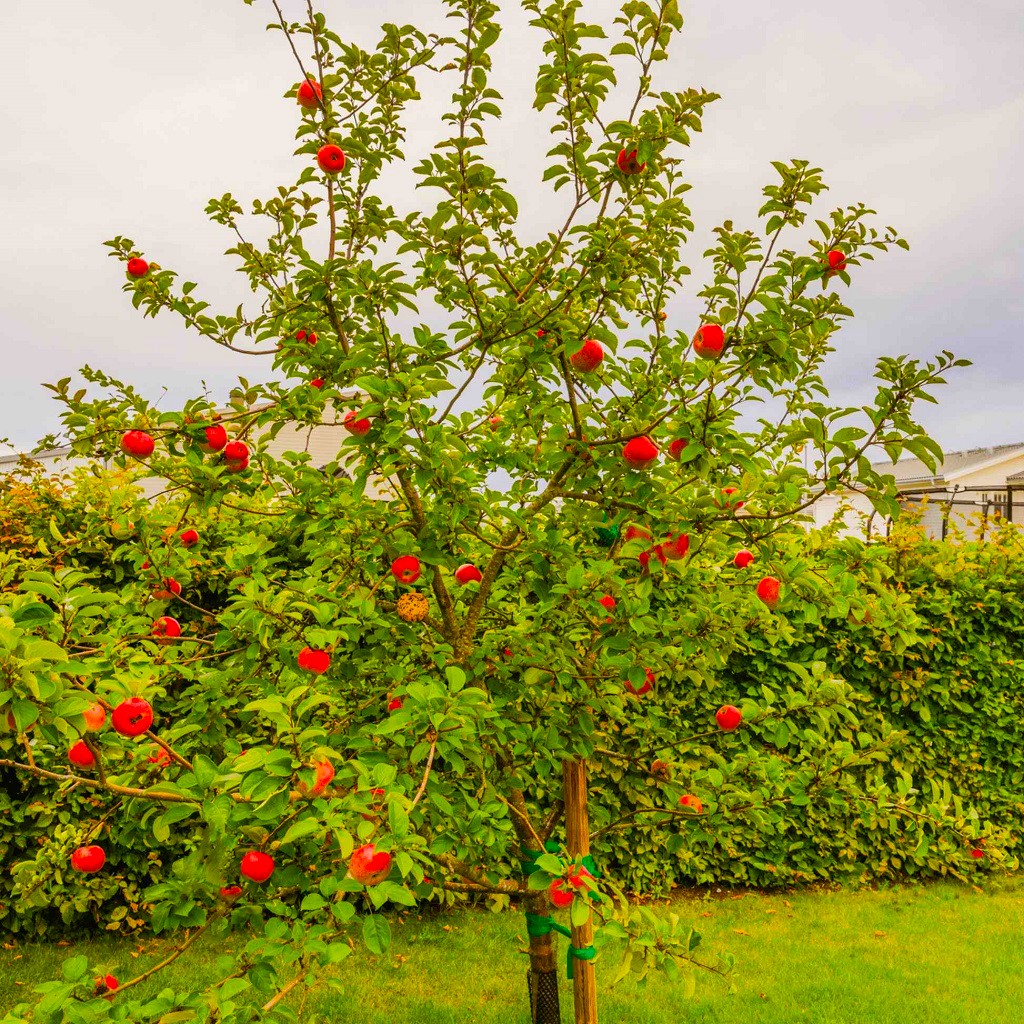Pruning apple trees is a crucial part of maintaining their health and ensuring a fruitful harvest. Regular pruning encourages new growth, improves airflow and sunlight penetration, and helps the tree develop a strong structure. Whether you’re a beginner gardener or an experienced horticulturist, knowing the proper techniques for pruning apple trees is essential for the long-term success of your orchard or home garden.
Why Prune Apple Trees?
Before diving into the “how,” let’s understand the benefits of pruning apple trees:
Improved Airflow and Sunlight: Pruning allows better airflow and sunlight penetration to the inner branches, reducing the risk of disease and ensuring that fruits get the sunlight they need to ripen properly.
Healthier Tree Growth: Removing dead, damaged, or diseased branches helps prevent the spread of pests and disease, allowing the tree to focus its energy on healthy growth.
Better Fruit Production: Pruning encourages the tree to produce larger and better-quality fruit. It also helps manage the number of apples on the tree, preventing overcrowding.
Shape and Size Control: Regular pruning keeps the tree’s size manageable, making it easier to harvest fruit and maintain a tidy appearance.
Best Time to Prune Apple Trees
The timing of pruning is crucial for achieving the best results. Generally, late winter or early spring is considered the best time to prune apple trees when the tree is still dormant but the threat of extreme cold has passed.
Dormant Season (Late Winter to Early Spring): This is the ideal time for major pruning. The tree is not actively growing, and pruning during dormancy minimizes stress and reduces the risk of disease.
Summer Pruning: This is for minor adjustments, such as removing any water sprouts (vigorous, vertical shoots) or suckers that may have grown since the last pruning session. Summer pruning helps to control the tree’s growth and improves fruit quality.
Essential Tools for Pruning Apple Trees
Before you begin, gather the following tools to ensure a clean, precise cut:
Pruning Shears: For smaller branches (1-inch diameter or less).
Loppers: For medium-sized branches (1-2 inches in diameter).
Pruning Saw: For larger branches (over 2 inches in diameter).
Handheld Pole Saw: For higher branches you can’t reach from the ground.
Disinfectant: To sanitize your tools before and after use to prevent the spread of disease.
Step-by-Step Guide to Pruning Apple Trees
Start with the Basics: Understand the Tree’s Structure
An apple tree typically has a central leader (main trunk) with secondary branches extending outward. A healthy apple tree should have an open, vase-like structure, which allows sunlight and air to reach the inner branches. Your goal during pruning is to maintain and improve this structure.
Remove Dead, Damaged, or Diseased Wood
Begin by cutting out any dead, broken, or diseased branches. These are easily identifiable by their lack of leaves or any visible damage (such as cracks, splits, or discoloration). Removing these parts ensures the tree’s energy isn’t wasted on unhealthy growth.
Thin Out the Interior
Next, focus on the interior of the tree. Remove any crossing or rubbing branches that might cause damage as they grow. If branches are growing inward toward the center of the tree, remove them to open up the interior. This will help improve air circulation and allow more sunlight to reach the branches that will produce fruit.
Cut Back Long, Unproductive Branches
Look for any long, spindly branches that aren’t producing much fruit or are growing excessively. Cut these back to a bud or lateral branch. Ideally, you want to encourage the tree to grow in a more horizontal manner, as horizontal branches tend to produce more fruiting spurs.
Shape the Tree
Prune to create a well-balanced structure. For most apple trees, this involves cutting the central leader (the main stem) slightly above the highest branch to encourage lateral growth. If the tree is still young, make sure to establish the main structure by selecting 3 to 4 well-spaced branches to serve as the tree’s scaffolding.
Cut Back to an Outer Bud
Whenever possible, make your cuts just above an outward-facing bud. This encourages growth that expands outward, which is ideal for increasing airflow and fruit production. Cut at a slight angle to prevent water from collecting on the cut surface, which could lead to rot.
Remove Suckers and Water Sprouts
Suckers are shoots that grow from the base of the tree or roots, while water sprouts grow from the main trunk or branches. These should be removed as they drain the tree’s energy and do not contribute to fruit production. Water sprouts, in particular, are often vigorous and grow vertically, which isn’t ideal for apple trees.
Reduce the Size of the Tree (If Necessary)
If your tree has grown too large or out of shape, you can reduce its size by shortening the longer branches. Make sure to cut back to a strong, outward-facing bud, so the tree maintains a healthy and productive growth pattern.
Pruning for Fruit Production
For apple trees to produce fruit efficiently, you’ll need to prune in a way that encourages fruiting. Here’s what to focus on:
Encourage Spurring: Apple trees bear fruit on short, stubby growths called “spurs.” These develop on 2- to 3-year-old wood. Prune back to encourage the development of more spurs.
Don’t Over-Prune: While pruning is necessary, too much can reduce the tree’s ability to produce fruit. Aim for a balance between maintaining a strong structure and leaving enough foliage to photosynthesize.
Post-Pruning Care
After pruning, ensure the tree gets adequate water and nutrients. Avoid fertilizing immediately after pruning, as the tree may not be able to fully absorb nutrients during this recovery period. Instead, wait until new growth begins before applying any fertilizer.
FAQs
When is the best time to prune apple trees?
The best time to prune apple trees is in late winter or early spring while the tree is still dormant. This reduces stress on the tree and promotes healthy growth when the growing season begins.
How much of the tree should I prune at once?
It’s best to prune no more than 20-30% of the tree’s canopy at a time. Over-pruning can stress the tree and reduce fruit production.
Can I prune my apple tree in the summer?
Yes, light pruning in the summer, such as removing water sprouts or suckers, can help maintain the tree’s shape and improve fruit quality without causing harm.
Final Thought
Pruning apple trees is an essential skill that will promote a healthy, productive tree and increase your apple yield. By carefully selecting branches to remove, maintaining a clean and balanced structure, and encouraging fruiting spurs, you’ll create a strong, thriving tree that will reward you with delicious apples season after season. Regular pruning will keep your apple tree in top shape and ensure that it remains a beautiful, bountiful addition to your garden. Happy pruning!



